
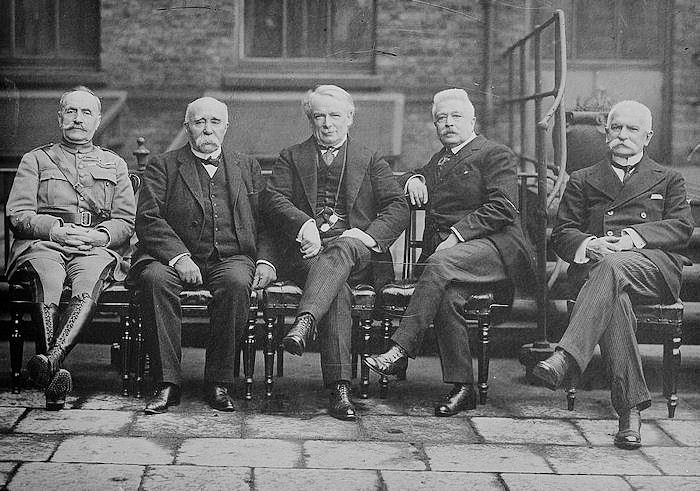
| Group portrait of principle Allied leaders in Paris for the postwar peace conference--from left; French Marshal Ferdinand Foch, French Premier Georges Clemenceau, British Prime Minister LLoyd George, Italian Premier Vittorio Orlando, Italian Foreign Minister Sidney Sonnino. Below Left: President Woodrow Wilson rides with French President Raymond Poincaré upon his arrival in Paris. Wilson's America, reluctantly drawn into the war, emerged as a world power at war's end--a new role which left many American politicians in Washington feeling uncomfortable. Below Right: The President (second from right) and his wife Edith tour a portion of the former Western Front. |
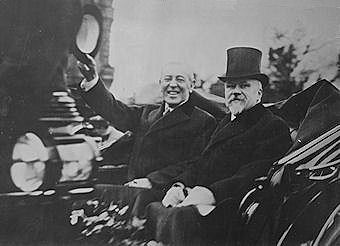
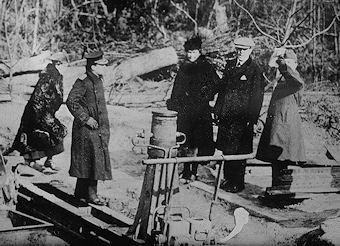
| Below: A full meeting of the Paris Peace Conference inside the ornate French Foreign Ministry building at the Quai d'Orsay. Representatives from the twenty-seven Allied nations met along with others. The Germans were excluded but kept a close eye on press reports about the proceedings. Allied indecision over what to do about the Russian Bolsheviks kept Russia from being invited. |
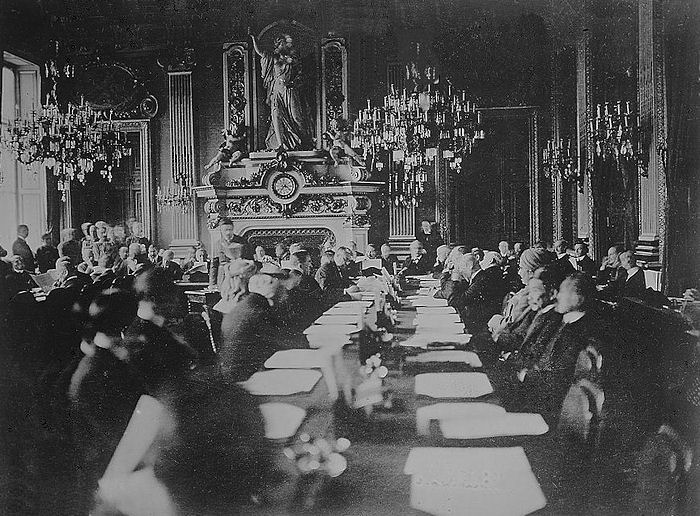
| Below Left: Peace Conference delegates tour the war ruins at Lens, France. Below Right: The 'Big Four' at the conference; Lloyd George, Orlando, Clemenceau and President Wilson. In reality, this soon became the Big Three with Orlando mostly ignored while a tough minded Clemenceau, wanting to punish Germany, became increasingly irritated with Wilson and his liberal Fourteen Points theme. After months of haggling, delays and testy exchanges, the finished Treaty was presented to the Germans for their signature exactly five years after the assassination of Archduke Franz Ferdinand which had precipitated the war. Key portions included: Sole guilt on Germany for the war; Thirty years of reparations to be paid to the Allies; Germany demilitarized west of the Rhine River; Alsace and Lorraine returned to France; reduction in size and separation of East Prussia from Germany proper; loss of all German colonies in Africa; and an army limited to 100,000 men. While setting the terms, Lloyd George had warned Clemenceau and Wilson, "You may strip Germany of her colonies, reduce her armaments to a mere police force and her navy to that of a fifth-rate power, all the same in the end if she feels that she has been unjustly treated in the peace of 1919 she will find means of exacting retribution from her conquerors." |
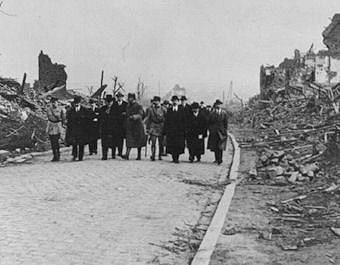
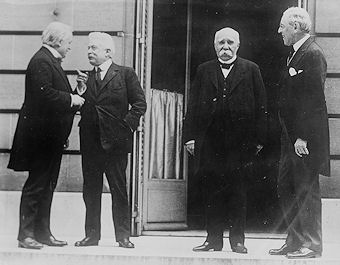
Return to World War I Timeline - 1918
The History Place - World War I Index Page
The History Place Main Index Page
Copyright © 2009 The History Place™ All Rights Reserved
Terms of use: Private home/school non-commercial, non-Internet re-usage only is allowed of any text, graphics, photos, audio clips, other electronic files or materials from The History Place.